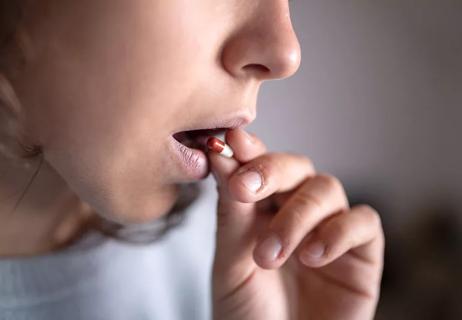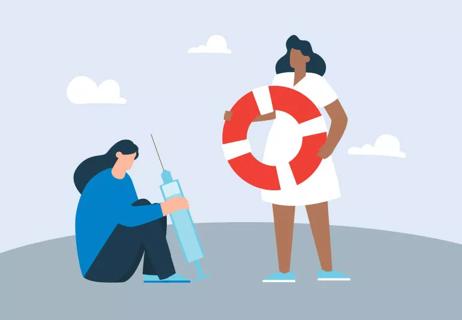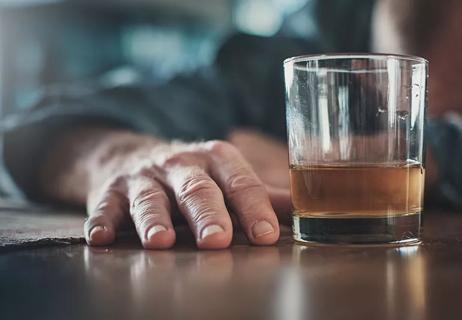Xylazine is an animal sedative that’s behind an increasing number of human overdose deaths

A veterinary medication called xylazine has earned the nickname of “tranq” (short for “tranquilizer”) for its sedating effect in humans. And data shows that from 2020 to 2021, xylazine-related overdoses increased by as much as 1,127% in parts of the United States — making it clear that this drug has quickly become a serious concern.
Advertisement
Cleveland Clinic is a non-profit academic medical center. Advertising on our site helps support our mission. We do not endorse non-Cleveland Clinic products or services. Policy
In early 2023, the U.S. Administration designated xylazine an “emerging threat” due to its role in this massive increase in overdoses and deaths. But what is tranq, and what do you need to know? Psychiatrist and addiction specialist David Streem, MD, explains.
Xylazine is an animal sedative with no approved use in humans. That means that while veterinarians use it as a painkiller and anesthetic for cows, sheep and other animals, it’s not a medication ever prescribed to or used on people.
But recently, people started combining xylazine with fentanyl, a synthetic opioid that’s normally used in medical settings to treat severe pain. Fentanyl is a major contributor to the opioid crisis, playing a role in the deaths of more Americans under age 50 than any other cause.
“The best way to describe xylazine is that it’s a sedative related to drugs that are sometimes given to critically ill patients in intensive care units in the U.S.,” Dr. Streem explains. “Both xylazine and fentanyl are sedating, so people who seek that sensation might find the combination of the two pleasurable.”
But xylazine, whether taken alone or combined with other drugs, is incredibly dangerous — and often deadly.
Advertisement
Injecting xylazine can lead to skin wounds, lesions and ulcers that become easily infected, which can cause the skin in that area to die and rot. This condition is called necrosis, and it often requires amputation, or surgery to remove the limb where the rotting tissue is.
“Xylazine injection increases the risk of necrosis. While that’s not unheard of with other drugs that are injected, we’re seeing it happen more often with xylazine,” Dr. Streem says. “We’re still trying to figure out why, but there have been a lot of associations, so far, between xylazine and these terrible flesh infections.”
Other side effects of xylazine may include:
Dr. Streem, who’s based in Cleveland, Ohio, says xylazine deaths are now being listed on the local coroner’s reports, an indicator that xylazine-induced overdoses are (or will soon be) on the rise across the country.
“Historically, Ohio in general — and especially Cuyahoga County, where Cleveland is — has been a kind of bellwether for drug trends,” he notes. “We are the canary in a coal mine, warning of what’s to come.”
In early 2023, the U.S. Food and Drug Administration (FDA) approved over-the-counter use of Narcan® (naloxone), a medication that can reverse the effects of an opioid overdose if it’s administered within minutes.
But Narcan won’t help reverse the effects of tranq.
“Narcan directly dislodges opiates from the body’s opiate receptor so that the drug can’t exert its effect,” Dr. Streem explains, “but because xylazine is not an opioid, it doesn’t bind to the body’s opiate receptor — which means Narcan doesn’t work.”
If you suspect that someone has overdosed on xylazine, call 911 (or your country’s emergency services number) immediately. “They need immediate oxygen and respiratory support, breathing support,” Dr. Streem states.
But remember how we said earlier that xylazine is often combined with fentanyl? If you suspect a xylazine overdose and have access to Narcan, administer it while you wait for emergency services to arrive.
If the person has taken xylazine cut with fentanyl, Narcan can help reverse the effects of the opioid while they await emergency treatment for a xylazine overdose. If it turns out they’ve only overdosed on xylazine (not combined with fentanyl), the Narcan won’t be effective, but it won’t cause any additional harm either.
Advertisement
Addiction is real, scary and potentially deadly — and people who struggle with addiction simply can’t stop the cycle on their own. If you or someone you love is coping with addiction, talk to a healthcare provider who can help guide you to the treatment you need.
Advertisement
Learn more about our editorial process.
Advertisement

It’s labeled as a supplement, but tianeptine is an addictive, dangerous drug

You must act fast to save a life

The approach helps reduce the negative impact associated with substance use disorder

An addiction specialist weighs in on the rising trend of “semi-sobriety”

Drinking and drugs worsen mental health issues like depression and anxiety

The Yuzpe regimen is less effective than other forms of emergency contraceptives, and it’s associated with more side effects

The best available evidence indicates that, used correctly, acetaminophen is safe to take throughout a pregnancy

This phenomenon is when your high expectations can influence how well a medication or procedure works

Babies can get congested easily, but you can calm their cough by keeping them hydrated, using nasal drops and running a humidifier

Weight loss may cause loose, sagging skin and muscle loss to your rear

Several conditions, like vitiligo and fungal infection, can cause a loss of pigmentation, leading to white spots or patches on your skin